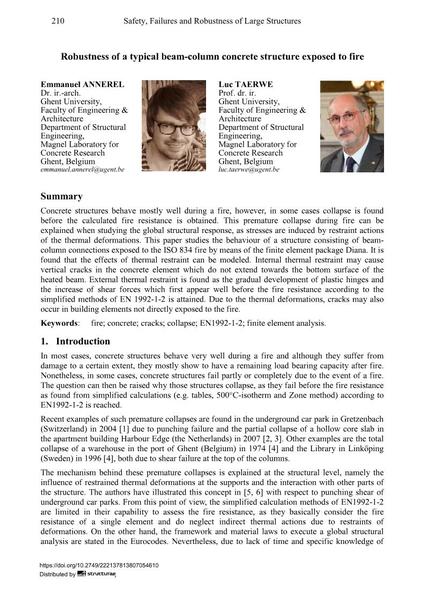Robustness of a Typical Beam-Column Concrete Structure Exposed to Fire

|
|
|||||||||||
Bibliographic Details
| Author(s): |
Emmanuel Annerel
Luc Taerwe |
||||
|---|---|---|---|---|---|
| Medium: | conference paper | ||||
| Language(s): | English | ||||
| Conference: | IABSE Workshop: Safety, Failures and Robustness of Large Structures, Helsinki, Finland, 14-15 February 2013 | ||||
| Published in: | IABSE Workshop, 14-15 February 2013, Helsinki | ||||
|
|||||
| Page(s): | 210-216 | ||||
| Total no. of pages: | 7 | ||||
| Year: | 2013 | ||||
| DOI: | 10.2749/222137813807054610 | ||||
| Abstract: |
Concrete structures behave mostly well during a fire, however, in some cases collapse is found before the calculated fire resistance is obtained. This premature collapse during fire can be explained when studying the global structural response, as stresses are induced by restraint actions of the thermal deformations. This paper studies the behaviour of a structure consisting of beam-column connections exposed to the ISO 834 fire by means of the finite element package Diana. It is found that the effects of thermal restraint can be modeled. Internal thermal restraint may cause vertical cracks in the concrete element which do not extend towards the bottom surface of the heated beam. External thermal restraint is found as the gradual development of plastic hinges and the increase of shear forces which first appear well before the fire resistance according to the simplified methods of EN 1992-1-2 is attained. Due to the thermal deformations, cracks may also occur in building elements not directly exposed to the fire. |
||||
| Keywords: |
concrete cracks finite element analysis FEA collapse fire EN1992-1-2
|
||||
